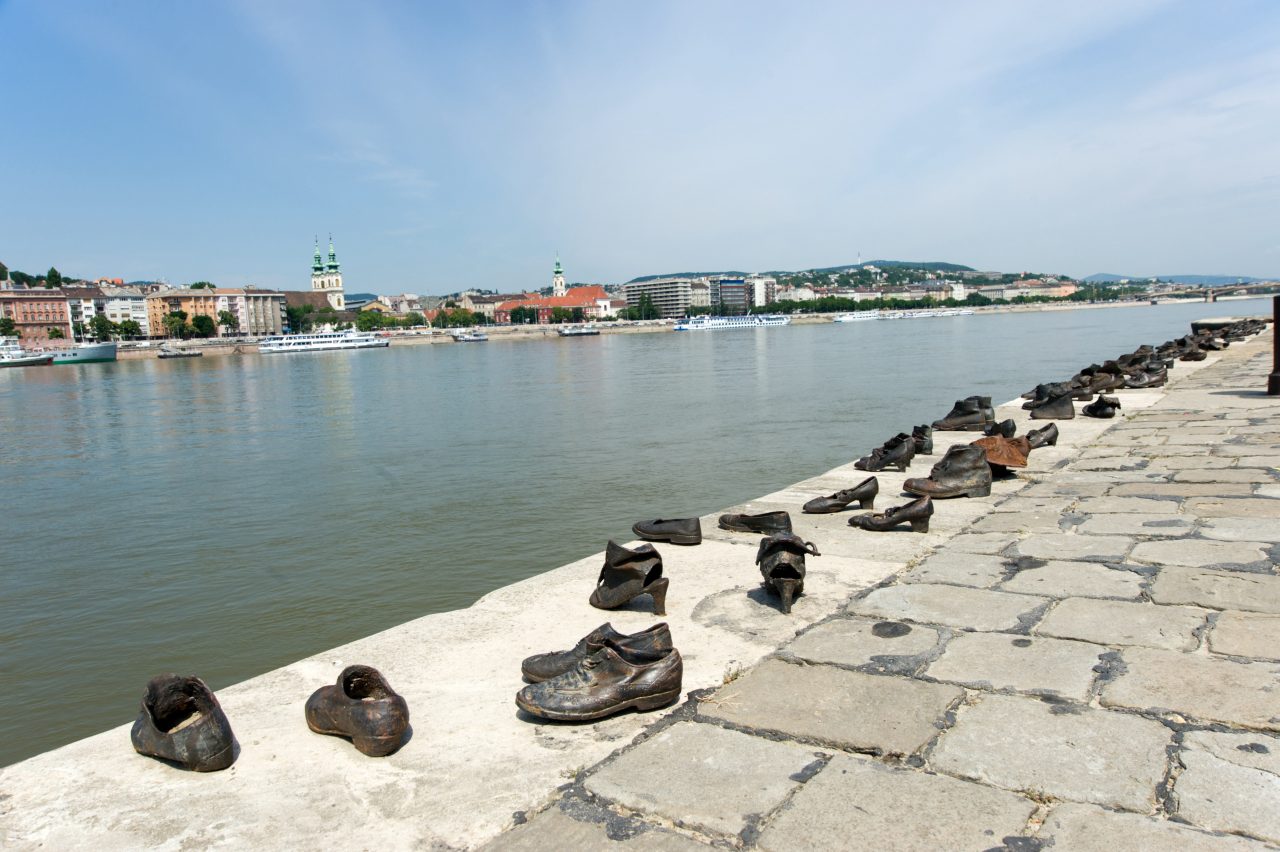17 January 1945: Liberation of the Budapest Ghetto
On 17-18 January 1945, Soviet troops liberated the Budapest Ghetto.

Image: Shoes memorial on the Danube River bank, Budapest, Hungary. Credit: Alex Segre / Getty.
The ghetto was established in November 1944, after Jews had been concentrated in ‘yellow-star houses’ across the city since June. At the same time, a so-called ‘international ghetto’ was established where approximately 15,600 Jews holding protective passes from the neutral states of Switzerland, Sweden, the Vatican, Portugal, and Spain were housed. They were subject to frequent raids by the Arrow Cross – a Hungarian extreme right-wing group – who stole their belongings, destroyed their papers, and shot many of them into the Danube river.
In December, Jews from the ‘international ghetto’ were moved into the main ghetto. This so-called ‘big ghetto’ was in District VII of Budapest and covered a small area of the city amounting to 0.3 square kilometres (0.1 square miles). It was surrounded by a fence and guarded by the Arrow Cross, who regularly refused deliveries of food and supplies. To create the ghetto, approximately 12,000 Christian residents were transferred out of the area and given apartments taken from Jews elsewhere in the city. The ghetto quickly became overcrowded and by the end of December its population had reached 55,000 people. This number increased to approximately 70,000 by the time of liberation as Jews in hiding and Jewish children from children’s homes were forced into the ghetto too.
Despite only being in existence for around seven weeks, the ghetto developed a network of communal services administered by the Jewish Council, including the provision of utilities and food, the preservation of order, and the upkeep of buildings. They also arranged religious services and education for children. Faced with inadequate supplies and unsanitary conditions, the Jewish Council struggled to control the situation and diseases spread.
On 24 December, Soviet troops encircled Budapest. The pressures felt outside of the ghetto disrupted the already limited food deliveries and stopped the transfer of dead bodies to the cemetery. By the liberation, around 3,000 bodies were awaiting burial in the ghetto, 2,200 of which were buried in several mass graves near the Dohány Street Synagogue. During this time, the Arrow Cross continued to attack Jews in the city.

John Hajdu MBE
The ghetto was located in the eastern half of the capital, known as Pest. Pest was liberated by the Soviet army on 17-18 January 1945. The remaining western part, Buda, was only liberated after another month of fighting that left the city in ruins. After liberation, Jewish organisations shifted their focus to support returning deportees and provide aid for Jews in need. They helped tens of thousands of Jews, providing emergency housing, food, and advice.
John Hajdu MBE was seven years old when he was liberated from the Budapest Ghetto. He remembers:
Having been in the Ghetto for just over six weeks, my aunt and I left in a weak and dazed condition, walking through a ruined city into a world we hardly recognised. All the bridges over the River Danube had been blown up and most of the houses were damaged, on fire, or demolished; the streets were littered with corpses and there was no food.


